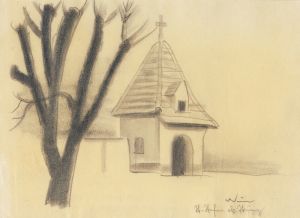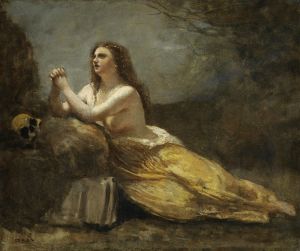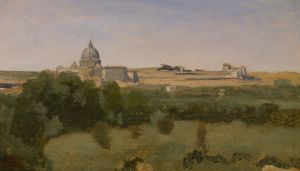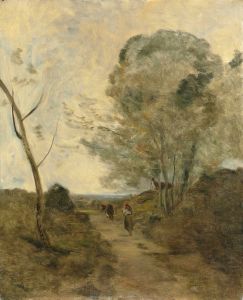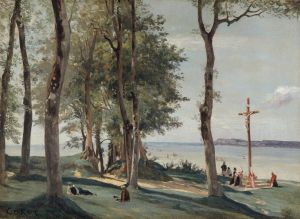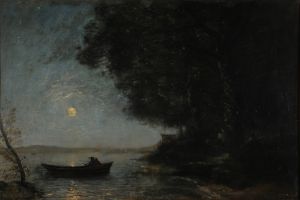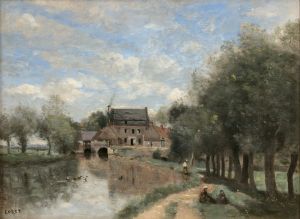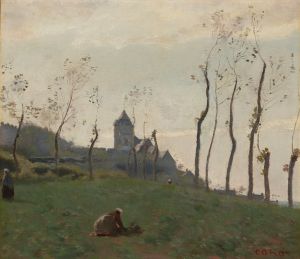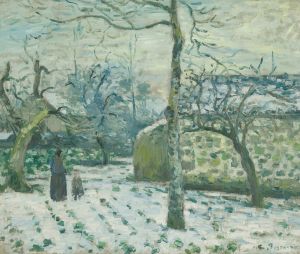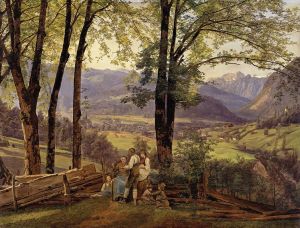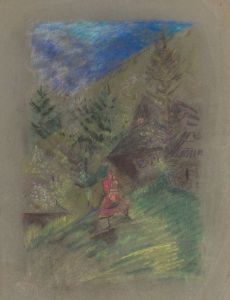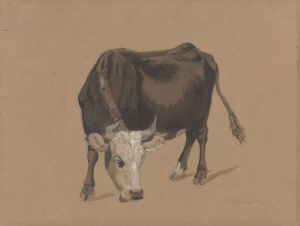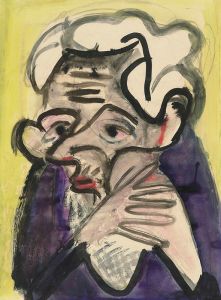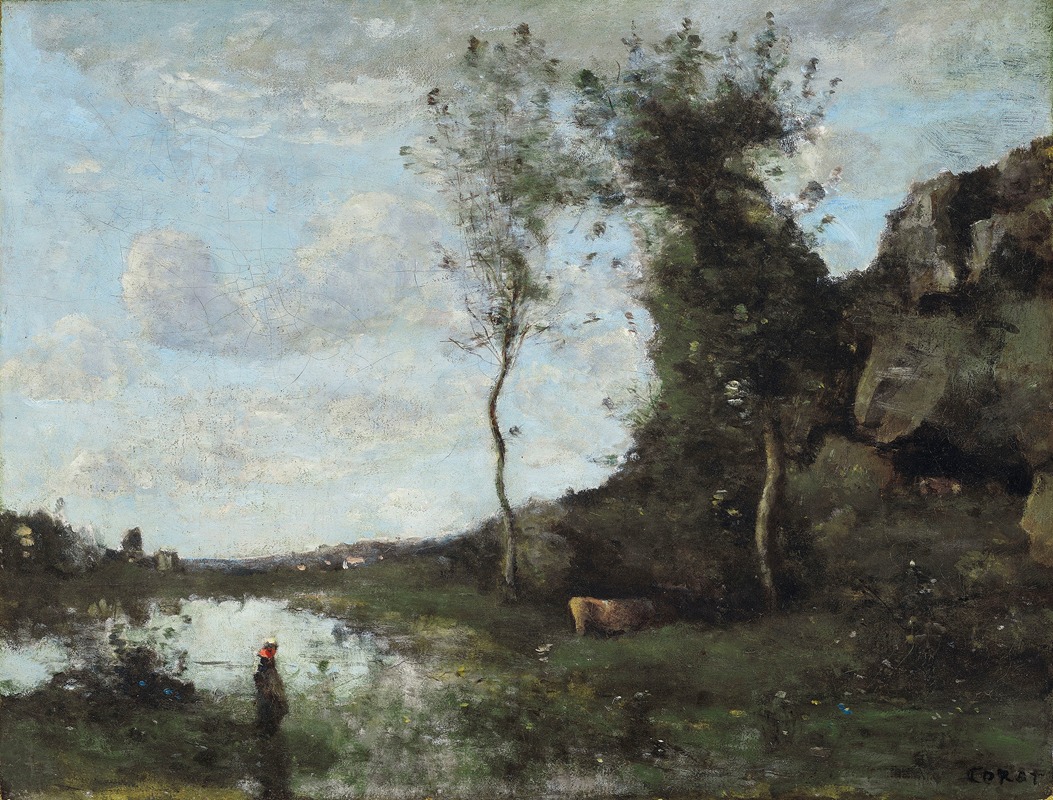
Une Paysanne Et Sa Vache À La Mare En Vue D’un Village
A hand-painted replica of Jean-Baptiste-Camille Corot’s masterpiece Une Paysanne Et Sa Vache À La Mare En Vue D’un Village, meticulously crafted by professional artists to capture the true essence of the original. Each piece is created with museum-quality canvas and rare mineral pigments, carefully painted by experienced artists with delicate brushstrokes and rich, layered colors to perfectly recreate the texture of the original artwork. Unlike machine-printed reproductions, this hand-painted version brings the painting to life, infused with the artist’s emotions and skill in every stroke. Whether for personal collection or home decoration, it instantly elevates the artistic atmosphere of any space.
Jean-Baptiste-Camille Corot's painting Une Paysanne Et Sa Vache À La Mare En Vue D’un Village (translated as A Peasant Woman and Her Cow at the Pond with a View of a Village) is a work attributed to the renowned 19th-century French landscape painter. Corot is widely recognized as a pivotal figure in the transition between the Neoclassical tradition and the Impressionist movement, and his works often depict serene rural scenes, blending naturalistic detail with a poetic atmosphere.
This particular painting portrays a tranquil rural setting, featuring a peasant woman and her cow near a pond, with a village visible in the background. The composition reflects Corot's characteristic style, which combines a keen observation of nature with a soft, atmospheric quality. The use of light and shadow in the painting creates a harmonious balance, emphasizing the peacefulness of the countryside. Corot's ability to capture the essence of rural life and his sensitivity to the interplay between human figures and their natural surroundings are evident in this work.
Corot was known for his plein air (outdoor) studies, which he often used as the basis for his studio compositions. While it is unclear whether this specific painting was created entirely en plein air or completed in the studio, it exemplifies his approach to blending direct observation with artistic interpretation. The inclusion of the peasant woman and the cow adds a narrative element to the scene, grounding the landscape in the daily life of rural communities.
The exact date of the painting is not definitively documented, but it likely falls within Corot's mature period, during which he produced many of his most celebrated works. This period is characterized by a shift toward more lyrical and atmospheric landscapes, moving away from the stricter realism of his earlier years. Corot's influence on later artists, particularly the Impressionists, is evident in his use of light and his focus on capturing the transient effects of nature.
As with many of Corot's works, Une Paysanne Et Sa Vache À La Mare En Vue D’un Village reflects his deep appreciation for the French countryside and his ability to convey its timeless beauty. The painting is an example of his mastery in blending human presence with the natural world, creating a scene that is both intimate and universal.
Further details about the painting's provenance, current location, or exhibition history are not readily available.





